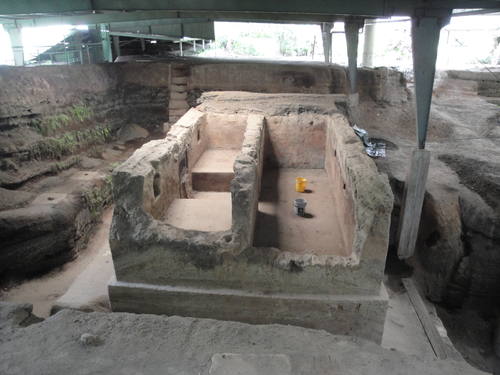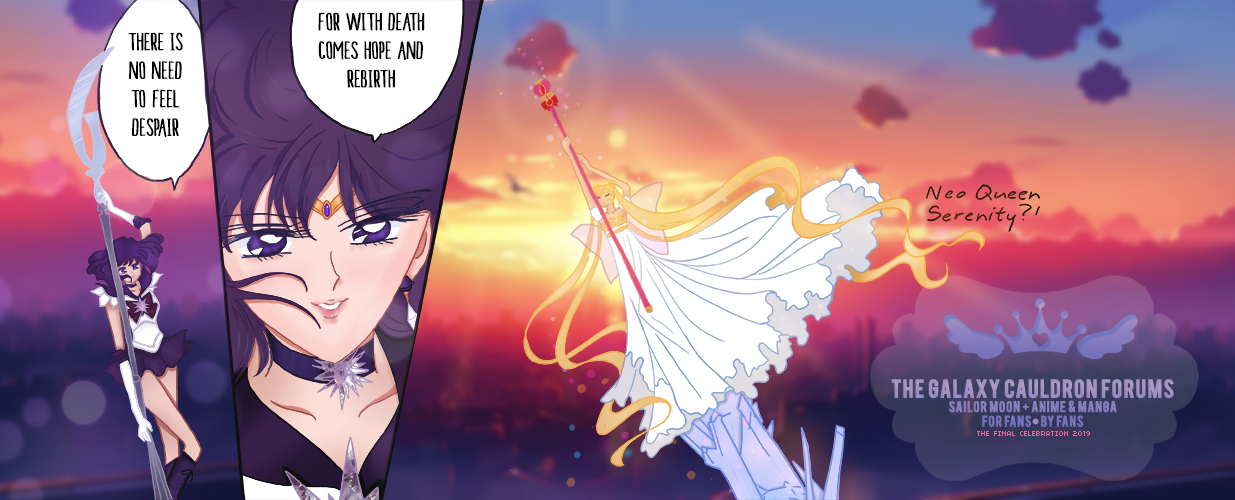Maya Archaeology in Mesoamerica
Hello, this is Sailor Venus, your local archaeologist! When I am not your role-playing director, I can be found in the forests of Belize looking for really cool stuff left by ancient peoples. I do this so I can learn more about those people, such as who they were and what they did in their spare time to make a living and have fun. My research has focused on the Maya of Mesoamerica. Sit back and read some interesting facts!
If you see a

symbol next to any of the site names, then that means I have been there!

You may have heard the Maya mentioned a lot a few years back, because misinterpretations of their calendar system started a fairly big uproar about the end of the world. As you know, it didn’t happen, but we’ll talk about that later. The Maya were a diverse, really big culture that spanned across Mexico, Guatemala, Belize, and parts of Honduras and El Salvador. There’s a map below if you don’t know where those places are. That’s a lot of ground to cover! As you can imagine, not all of the Maya were the same, but archaeologists recognize this group of people shared many cultural elements, like their calendar system. In fact, the Maya are still around today and their descendants live in the countries I mentioned above. However, I am going to focus on the Maya who lived from roughly 2000 B.C.E to 1500 A.D.

A map of Central America! We are visiting the places in green.
Let’s visit our first archaeological site on today’s tour: Tikal.
Tikal
You’ll find this site in Guatemala. Tikal is likely the most well-known of the Maya archaeological sites. You’ve probably seen it before, especially because portions of it were actually seen in Star Wars films. Tikal is well known for a reason, because it was very powerful during its prime. In fact, archaeologists know much of the politics
and warfare in this region during this time depended on whether you counted Tikal or Calakmul (another really powerful site) as your ally.

The major buildings in the core of Tikal are connected by huge roads called ‘sacbe.’ Other archaeological sites have sacbe, too. These roads helped connect distant areas of a site and made travel easier. The majority of excavations and research have taken place in the North Acropolis. The North Acropolis has eight funerary temples built over a 300-year period. What’s really neat about the Maya is that they loved to build on top of other buildings. So, let’s say a new leader wanted to build an even bigger pyramid. Instead of tearing the old one down, he’d build on top of the old one. So, it’s kind of like those toys where you have a doll inside of a doll inside of a doll, except you have a building on top of an old building built on top of an even older building. Of course, this makes digging them rather complicated for the archaeologists!

The North Acropolis during a ceremony.
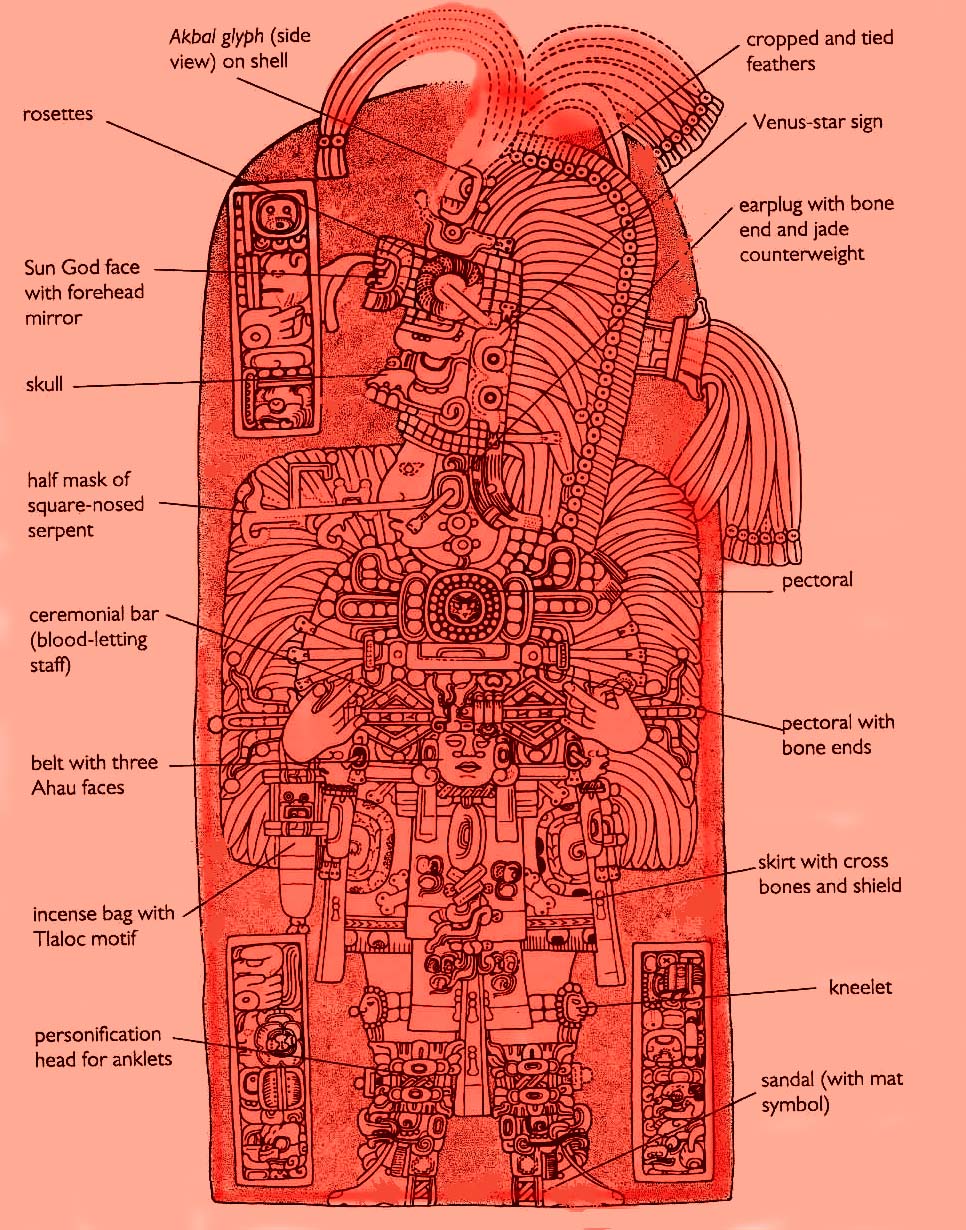
Stela 16. Stela are stone monuments the Maya built to commemorate rulers and special events.
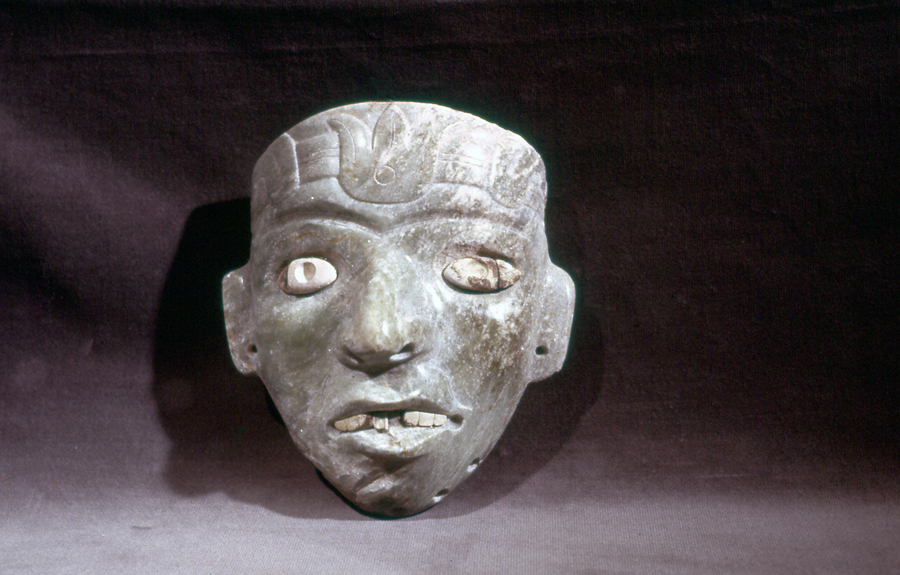
A greenstone mask from Burial 85.
Chichen Itza
Chichen Itza, in the Yucatan Peninsula of Mexico, is also another popular tourist destination. By the time Chichen Itza was built, many things had changed. Living in the interior of Mesoamerica (like where Tikal is located) was no longer popular, the political system no longer favored divine kings, and the Gulf Coast began to boom economically. Chichen Itza took advantage of the weakening influence in the interior and that city established itself as a powerful center. Chichen Itza became one of the largest Maya cites.

The Castillo - Do you see the snake?
The architecture and art from Tikal and Chichen Itza even look different. The style found at Chichen Itza is in the ‘Puuc’ style, which favors decorative mosaics near the top of buildings. Let’s talk about some of those buildings. The Caracol is a unique round structure placed on top of two rectangular structures. Round temples were often associated with the wind-deity aspect of Quetzalcoatl (K’uk’ulcan). It has a stairway in this structure resembles a snail shell, hence its name in Spanish. Some of the windows in this building line up with important astronomical events, such as the equinox.

The Caracol
Another interesting feature in Chichen Itza are the ballcourts. The Maya used the ballcourts to play a game with a rubber ball. The specifics of this ballgame are not clearly understood by archaeologists, but it required some heavy padding and, perhaps, some figurative or literal death. The rubber ball they used would have been a lot heavier and denser than what we are used to today! Chichen Itza has more ballcourts and the largest of any Maya center.

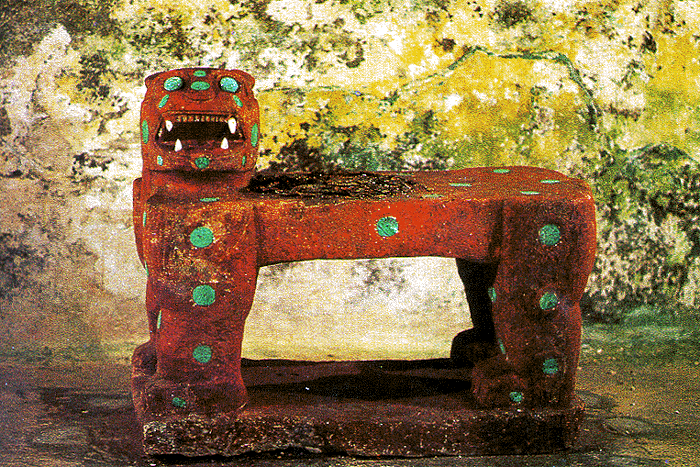
Jaguar Throne found in El Castillo pyramid.
Ceren
Ceren, in El Salvador, is every archaeologist’s dream. This site was buried by volcanic ash (like Pompeii) and, as a consequence, has extraordinary preservation. The wet, humid environment in Central America is not very great for preservation, so usually only the hardiest of materials (like stone) survive after long periods of time. But, look at that picture below! The volcanic ash preserved even the carefully tilled rows of a maize field and the holes of each maize plant. The impressions of plants left behind in the volcanic ash told, without a doubt, archaeologists that the Maya cultivated maize, beans, squash, agave, cacao, chiles, cotton, malanga, and manioc.
Ceren was a farming village. These types of ‘commoner’ sites can sometimes be harder to identify and understand archaeologically, because the inhabitants didn’t have the means to leave lots and lots of expensive or big stuff. Archaeologists suspect many commoner houses were actually made of perishable materials, like clay and wood. These are the types of materials that decompose really quickly in Central America, so archaeologists sometimes have a hard time finding these houses. At Ceren, the volcanic ash preserved these types of houses, even the thatch roofing! Perhaps the volcanic eruption happened quickly, because many of the people left behind their things. This is really neat, too, because we can see what they were doing when the eruption happened.
